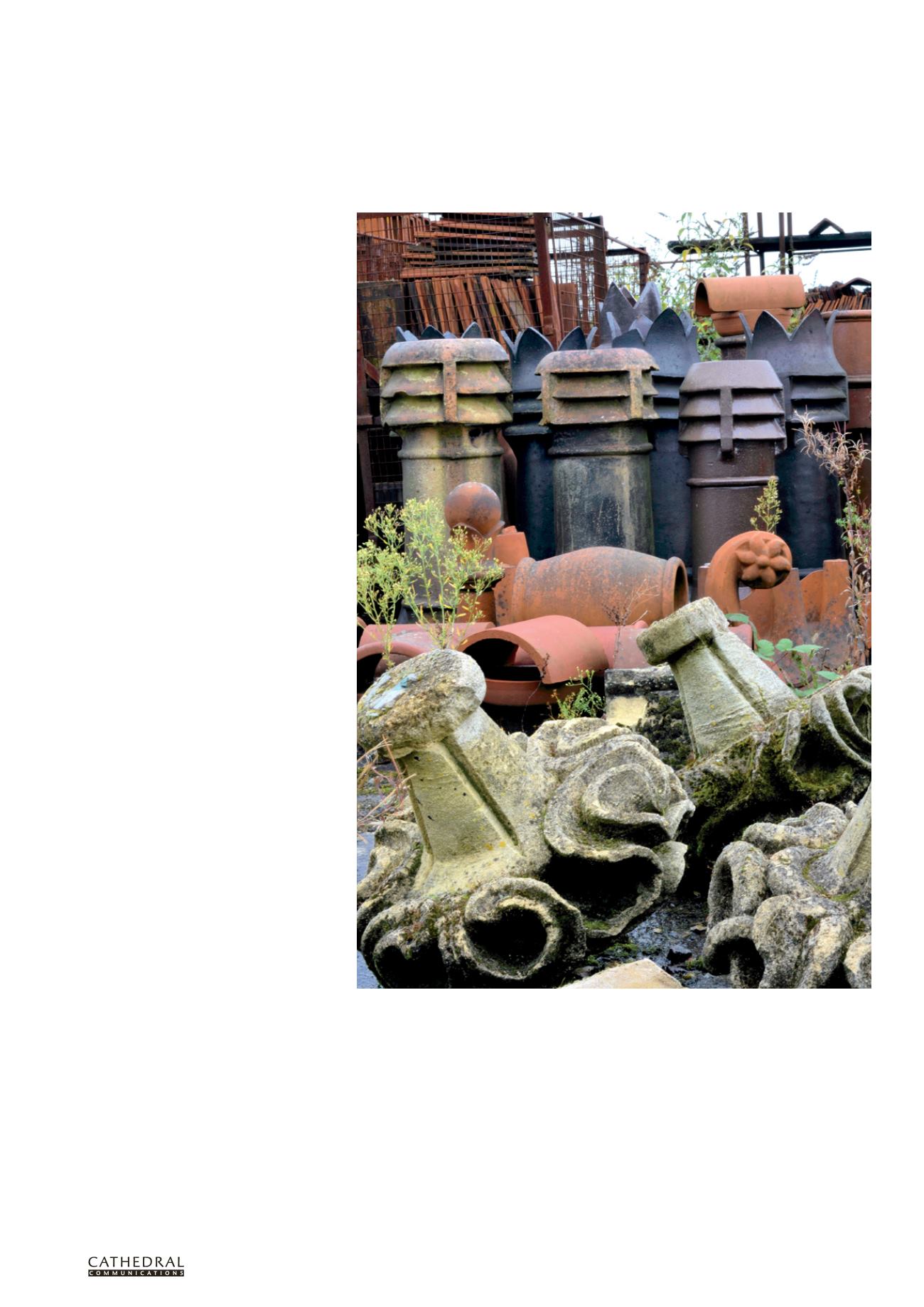

T W E N T Y S E C O N D E D I T I O N
T H E B U I L D I N G C O N S E R VAT I O N D I R E C T O R Y 2 0 1 5
1 3 9
3.5
STRUCTURE & FABR I C :
GENERAL BU I LD I NG
MATER I ALS
SALVAGE and SUSTAINABILITY
DAVID BOULTING
‘I
N SHORT,
a feeble and lifeless forgery is
the final result.’ This, famously, is how
the 1877 manifesto of the Society for
the Protection of Ancient Buildings (SPAB)
described the then-fashionable Victorian
practice of conjectural ‘restoration’. One can
only imagine then that William Morris, one
of the SPAB’s founders, would have reserved
a special corner of hell for anyone who would
pillage a historic element from one building
and thrust it into the fabric of another.
Allowing future architectural historians,
conservators and others to ‘read’ the history of
a building and identify its phases of evolution
and cycles of repair, remains at the heart
of current good practice in conservation.
Confusing a building’s biography by adding
alien components is something close to
sacrilege for many conservators.
However, the issues surrounding the
reuse of historic materials and components
in new contexts are more complex than this
suggests. Like it or not, demolition of historic
fabric occurs legally, often for structural
reasons. Much of the material that is salvaged
from these buildings is no longer available
from any other source, whether because
production technology has changed, or
because a quarry is no longer in production,
or because the timber is now endangered.
In some cases there will be no suitable
modern alternative, and the argument for
reusing these components in conservation
is compelling. Often the materials and
components will also have intrinsic value –
for their historic significance, their beauty or
their craftsmanship – and the components
themselves are worthy of protection.
In terms of environmental impact too,
there is a clear imperative to reclaim and reuse
material wherever practical.
SUSTAINABILITY
The environmental impacts associated with
new building materials will obviously be greater
than those of reclaimed materials, provided
the latter can readily be made fit for purpose. It
requires the energy equivalent of one gallon of
petrol to produce a dozen bricks (Thornton Kay,
2014). Reclaiming good quality historic bricks,
especially if they were laid using lime mortar,
which is easily removed, is common sense. As
Craig Jones’ introductory article (see page 6)
points out, ‘bricks and mortar are high-carbon
items but have a long lifespan. The embodied
carbon of these products therefore needs
to be retained for as long as possible to gain
maximum value from them’.
In the case of timber, older material is
often of superior quality. As Joseph Bispham
explains (see page 123), the architectural and
joinery timber found in Britain’s historic
buildings is either native hardwood or
imported slow-grown softwood. In either case
the timber is often of a superior quality to the
faster grown softwoods available today, while
modern hardwoods are expensive and are
often linked to unsustainable and/or illegal
forestry practices. Again, common sense
dictates that such material should be reused
where possible.
BACKGROUND
Architectural salvage and reclamation has a
long history, and it is common to find pieces
of older fabric reused in historic buildings,
such as components of the abbeys and
monasteries destroyed in the Reformation.
More recently, the ruins at Fonthill Abbey,
William Beckford’s Gothic pile near
Tisbury, Wiltshire, were still being used as
a source of good quality masonry around a
century after its partial collapse in 1825.
Today there are hundreds of suppliers
across the country specialising in reclaimed
building materials, from bricks and tiles to
fireplaces and larger components such as
staircases. However, reclamation also covers
Some of the treasures to be found in the yard of Walcot Architectural Salvage near Bath
















